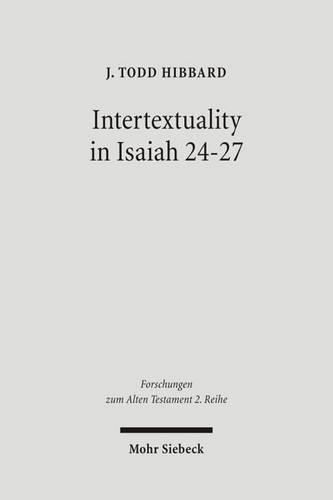Readings Newsletter
Become a Readings Member to make your shopping experience even easier.
Sign in or sign up for free!
You’re not far away from qualifying for FREE standard shipping within Australia
You’ve qualified for FREE standard shipping within Australia
The cart is loading…






J. Todd Hibbard examines the way in which Isaiah 24-27 reuses earlier texts and traditions as part of its literary strategy. He analyzes those literary connections under the rubric of intertextuality, an idea taken over from modern literary studies. Intertextuality is normally recognized as describing an orientation to one or more texts, but does not define a particular methodology. Moreover, because intertextuality is a term that is used in biblical studies in a variety of ways, the first part of this work seeks to define a methodology based on an intertextual approach that is useful for studying prophetic texts. This methodology attempts to understand the ways in which an ancient author may have appropriated an earlier text in a new composition. It requires that texts share common vocabulary and themes, be chronologically possible, and exegetically meaningful to be a true intertextual connection. In terms of literary technique, the author recognizes that intertextual connections may be forged through citations, allusions, and echoes. Finally, he considers several possible purposes for such intertextual connections. The major exegetical categories for understanding the intertextual connections noted in Isaiah 24-27 include texts which universalize earlier judgment passages, texts which universalize earlier restoration and salvation passages, and texts which respond to earlier prophetic texts that are considered unfulfilled.
$9.00 standard shipping within Australia
FREE standard shipping within Australia for orders over $100.00
Express & International shipping calculated at checkout
J. Todd Hibbard examines the way in which Isaiah 24-27 reuses earlier texts and traditions as part of its literary strategy. He analyzes those literary connections under the rubric of intertextuality, an idea taken over from modern literary studies. Intertextuality is normally recognized as describing an orientation to one or more texts, but does not define a particular methodology. Moreover, because intertextuality is a term that is used in biblical studies in a variety of ways, the first part of this work seeks to define a methodology based on an intertextual approach that is useful for studying prophetic texts. This methodology attempts to understand the ways in which an ancient author may have appropriated an earlier text in a new composition. It requires that texts share common vocabulary and themes, be chronologically possible, and exegetically meaningful to be a true intertextual connection. In terms of literary technique, the author recognizes that intertextual connections may be forged through citations, allusions, and echoes. Finally, he considers several possible purposes for such intertextual connections. The major exegetical categories for understanding the intertextual connections noted in Isaiah 24-27 include texts which universalize earlier judgment passages, texts which universalize earlier restoration and salvation passages, and texts which respond to earlier prophetic texts that are considered unfulfilled.